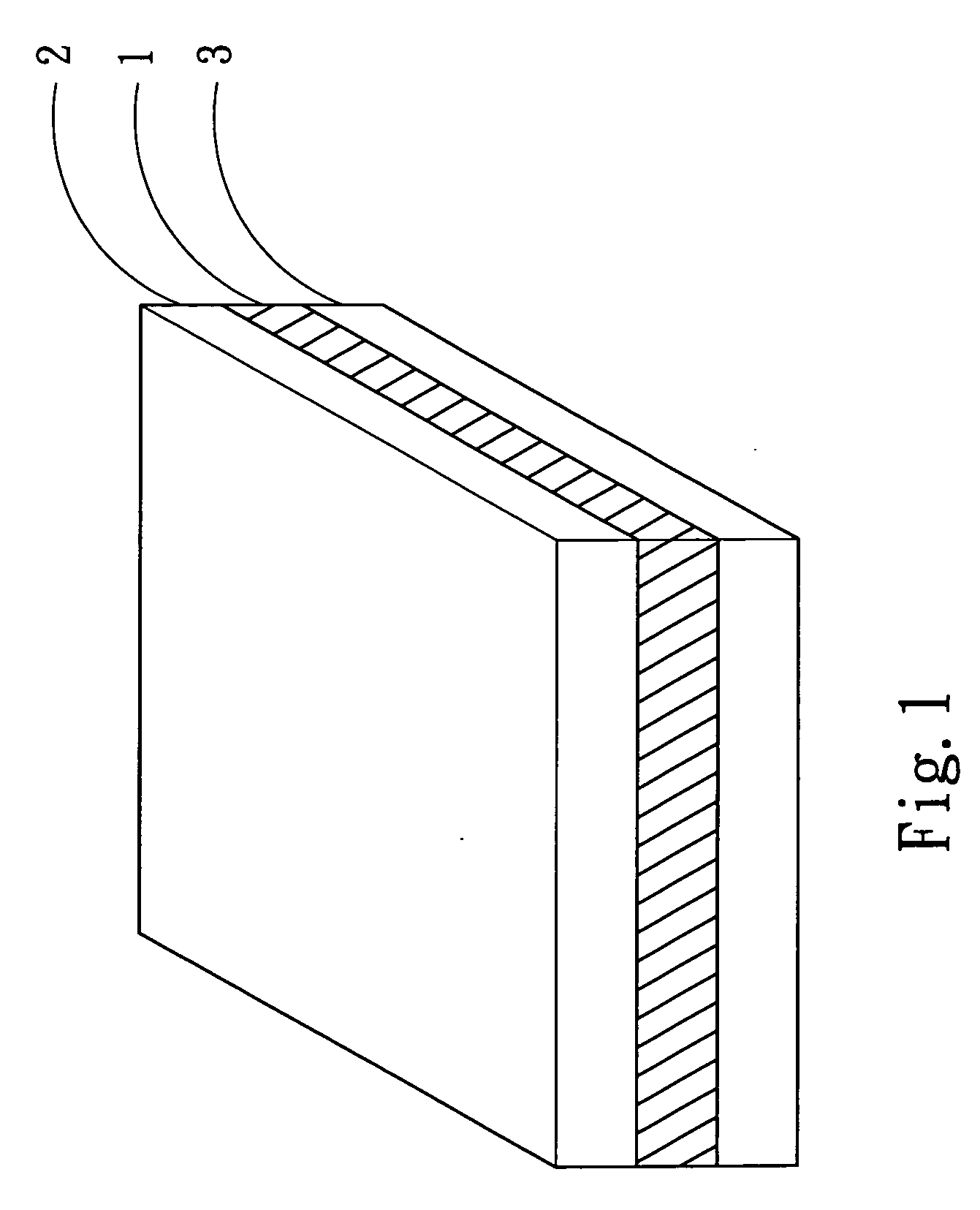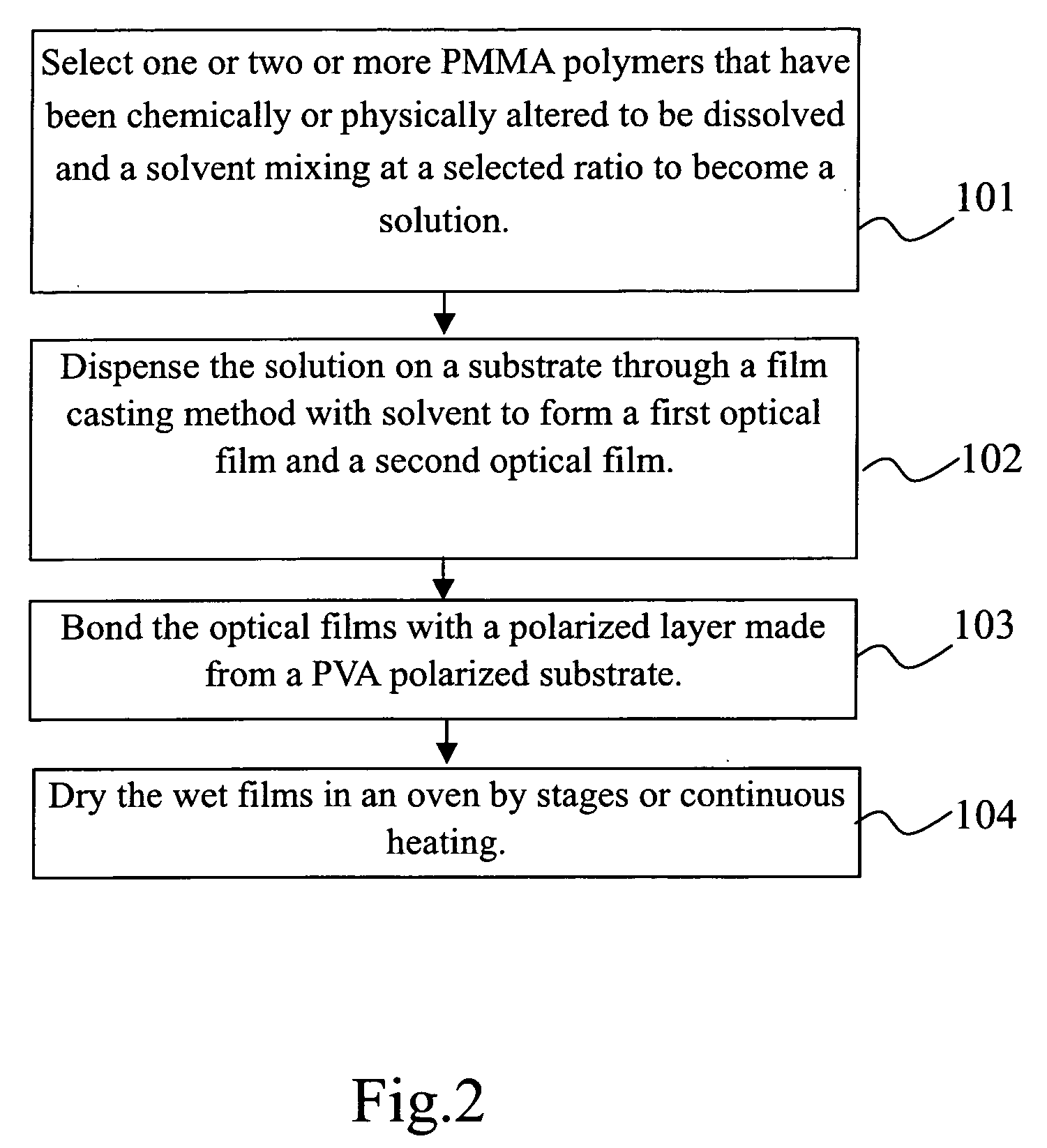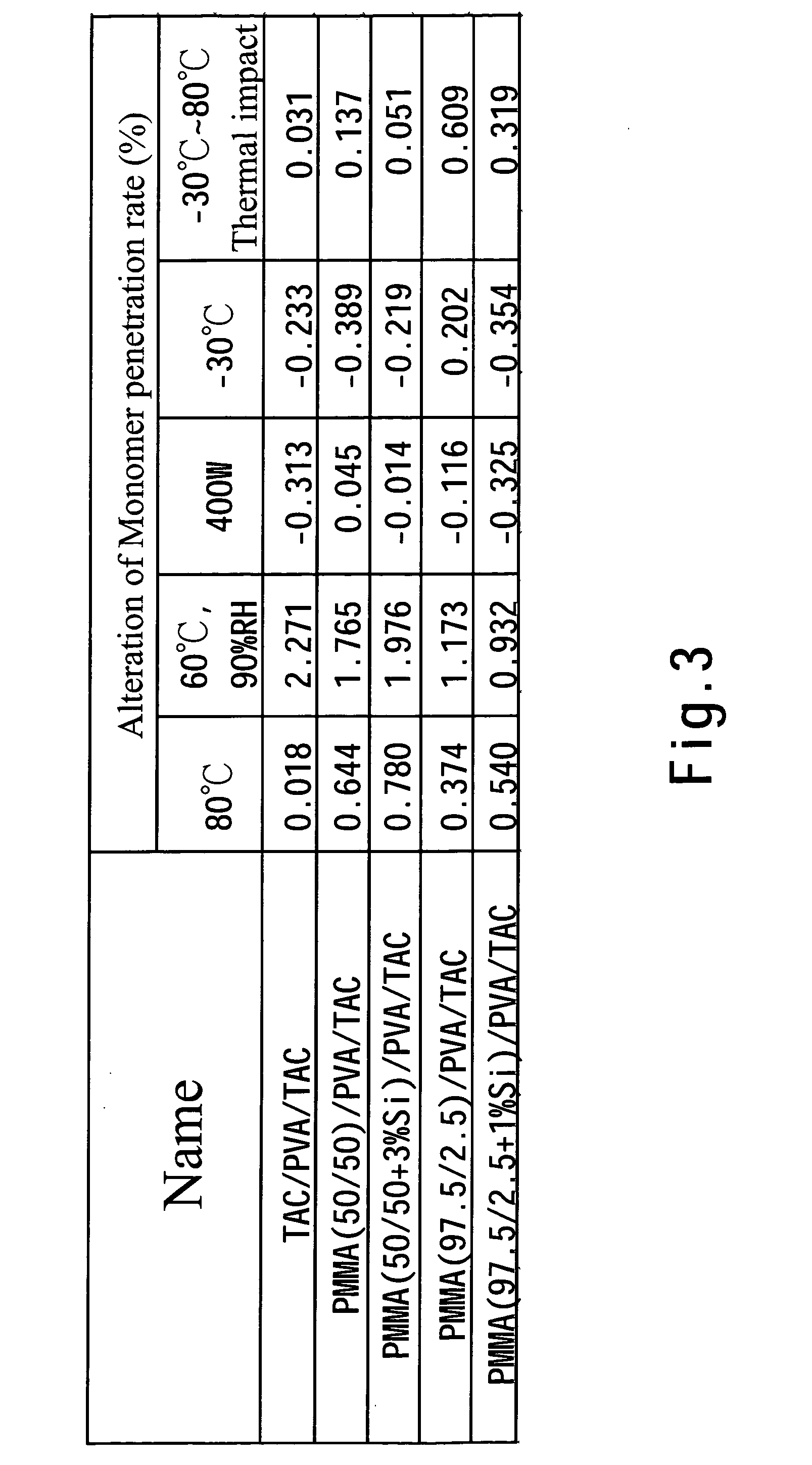Polarized plate
a technology of polarized plates and optical films, applied in the field of polarized plates, can solve the problems of film deformation or stress, and film made from the above-mentioned techniques, and achieve the effect of enhancing the mechanical characteristics of the optical film
- Summary
- Abstract
- Description
- Claims
- Application Information
AI Technical Summary
Benefits of technology
Problems solved by technology
Method used
Image
Examples
Embodiment Construction
[0022]Refer to FIG. 1 for an embodiment of the invention. The polarized plate of the invention mainly includes a polarized layer 1, a first optical film 2 located on a upper surface of the polarized layer 1 and a second optical film 3 located on a lower surface of the polarized layer 1. At least one of the upper optical film 2 and the lower optical film 3 is made from PMMA.
[0023]Aside from PMMA to make one of the first and second optical films 2 and 3, another optical film may be made from triacetate (TAC), polycarbonate (PC) or cycloolefin polymer (COP) to brace or protect the polarized layer 1.
[0024]The PMMA to fabricate the optical film includes PMMA, PMMA with a substituted functional group, or a mixture of a plurality of PMMAs.
[0025]The TAC in this invention mainly is selected from KC8U made by Konica Co. and TDY-80 made by Fuji CO.
[0026]Refer to FIG. 2 for a manufacturing flow chart for an embodiment of the polarized plate of the invention. First, at step 101, select a PMMA po...
PUM
| Property | Measurement | Unit |
|---|---|---|
| Fraction | aaaaa | aaaaa |
| Fraction | aaaaa | aaaaa |
| Fraction | aaaaa | aaaaa |
Abstract
Description
Claims
Application Information
 Login to View More
Login to View More - R&D
- Intellectual Property
- Life Sciences
- Materials
- Tech Scout
- Unparalleled Data Quality
- Higher Quality Content
- 60% Fewer Hallucinations
Browse by: Latest US Patents, China's latest patents, Technical Efficacy Thesaurus, Application Domain, Technology Topic, Popular Technical Reports.
© 2025 PatSnap. All rights reserved.Legal|Privacy policy|Modern Slavery Act Transparency Statement|Sitemap|About US| Contact US: help@patsnap.com



